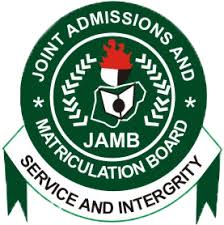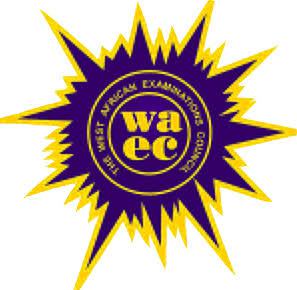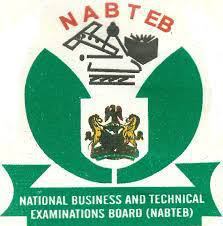WAEC 2024/2025 General Mathematics Syllabus Questions and Answers
It is no longer news that Waec 2024/2025 registration has begun and the May/June examination is very close. So many waec candidates have been asking questions about 2024 waec syllabus and topics to read so as to pass waec 2024 without much stress. The truth of the matter is that, the relevance of Jamb syllabus and expo on the topics to focus on cannot be overemphasized. There are four weapons you need you need to pass the WAEC 2024/2025 examination. They are: WAEC Syllabus WAEC past questions and answers Hot topics to read to pass waec 2024/2025 The recommended waec textbooks and Your complete preparation. In this article, I will bread down the waec mathematics syllabus for you. See Also: How to pass waec without expo WAEC MATHEMATICS GENERAL GUIDE For all papers which involve mathematical calculations, mathematical and statistical tables published for WAEC should be used in the examination room. However, the use of non-programmable, silent and cordless calculator is allowed. The calculator must not have a paper printout. Where the degree of accuracy is not specified in a question the degree of accuracy expected will be that obtainable from the WAEC mathematical tables. Trigonometrical tables in the pamphlet have different columns for decimal fractions of a degree, not for minutes and seconds. No mathematical tables other than the above may be used in the examination. It is strongly recommended that schools/candidates obtain copies of these tables for use throughout the course. Candidates should bring rulers, protractors, pair of compasses and set squares for all papers. They will not be allowed to borrow such instruments and any other materials from other candidates in the examination hall. It should be noted that some questions may prohibit the use of tables and /or calculators. The use of slide rules is not allowed. Graph paper ruled in 2 mm squares, will be provided for any paper in which it is required. UNITS Candidates should be familiar with the following units and their symbols. Length 10000 millimetres (mm) = 100 centimetres (cm) = 1 metre (m) 1000 metres = 1 kilometre (km) Area 10,000 square metres (m2) = 1 hectare (ha) Cubic Capacity 1000 cubic centimetres (cm3) = 1 litre (1) Mass 1000 milligrammes (mg) = 1 gramme (g) 1000 grammes (g) = 1 kilogramme (kg) WEST AFRICAN SENIOR SCHOOL CERTIFICATE EXAMINATION MATHEMATICS (CORE)/GENERAL MATHEMATICS 324 CURRENCIES The Gambia – 100 bututs (b) = 1 dalasi (D) Ghana – 100 pesewas (p) = 1 Ghana cedi GH(¢) Liberia – 100 cents (c) = 1 dollar ($) *Nigeria – 100 kobo (k) = 1 naira (N) *Sierra Leone – 100 cents (c) = 1 leone (Le) U. K. – 100 pence (p) = 1 pound (£) U.S.A. – 100 cents (c) = 1 dollar ($) French speaking territories : 100 centimes (c) = 1 franc (fr) Any other units used will be defined. *General Mathematics/Mathematics (Core). AIMS OF THE WAEC MATHEMATICS SYLLABUS The syllabus is not intended to be used as a teaching syllabus. Teachers are advised to use their own National teaching syllabuses. The aims of the syllabus are to test: (i) computational skills; (ii) the understanding of mathematical concepts and their applications to everyday living; (iii) the ability to translate problems into mathematical language and solve them with related mathematical knowledge; (iv) the ability to be accurate to a degree relevant to the problems at hand; (v) precise, logical and abstract thinking. WAEC EXAMINATION FORMAT There will be two papers both of which must be taken. PAPER 1 – 11/2 hours PAPER 2 – 21/2 hours WASSCE GENERAL MATHEMATICS/MATHEMATICS (CORE) SYLLABUS TOPICS CONTENTS NOTES A. NUMBER AND NUMERATION (a) Number Bases (i) Binary numbers **(ii) Modular arithmetic Conversions from base 2 to base 10 and vice versa. Basic operations excluding division. Awareness of other number bases is desirable. Relate to market days, the clock etc. Truth sets (solution sets) for various open sentences, e.g. 3 x 2 = a(mod) 4, 8 + y = 4 (mod) 9. (b) Fractions, decimals and approximations (i) Basic operations on fractions and decimals. (ii) Approximations and significant figures Approximations should be realistic e.g. a road is not measured correct to the nearest cm. Include error. (c) Indices (i) Laws of indices. (ii) Numbers in standard form. Include simple examples of negative and fractions indices. e.g. 375.3 = 3.753 x 102 0.0035 = 3.5 x 10-3 Use of tables of squares, square roots and reciprocals. (d) Logarithms (i) Relationship between indices and logarithms e.g. y = 10k → K = log10 y (ii) Basic rules of logarithms i.e. log10 (pq) = log10P + log10q log10 (p/q) = log10 P – log10q log10Pn = nlog10P (iii) Use of tables of logarithms, Base 10 logarithm and Antilogarithm tables. Calculations involving multiplication, division, powers and square roots. (e) Sequence (i) Patterns of sequences. Determine any term of a given sequence. *(ii) Arithmetic Progression (A.P) Geometric Progression (G.P). The notation Un = the nth term of a sequence may be used. Simple cases only, including word problems. Excluding sum Sn. (f) Sets (i) Idea of sets, universal set, finite and infinite sets, subsets, empty sets and disjoint sets; idea of and notation for union, intersection and complement of sets. (ii) Solution of practical problems involving classification, using Venn diagrams. Notations: ℰ,, , , , , P1 (the complement of P). * Include commutative, associative and distributive properties. The use of Venn diagrams restricted to at most 3 sets. **(g) Logical reasoning Simple statements. True and false statements. Negation of statements. Implication, equivalence and valid arguments. Use of symbols : ~, , , . Use of Venn diagrams preferable. WEST AFRICAN SENIOR SCHOOL CERTIFICATE EXAMINATION MATHEMATICS (CORE)/GENERAL MATHEMATICSCategories: WAEC Syllabus Past Questions and Answers
0 Responses




